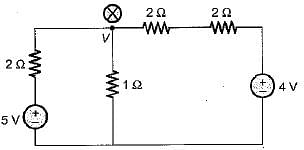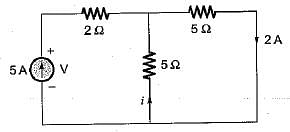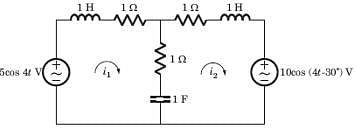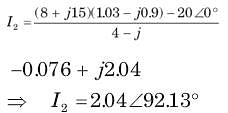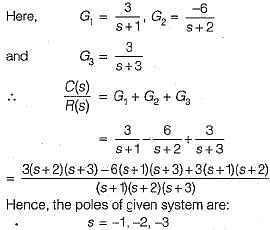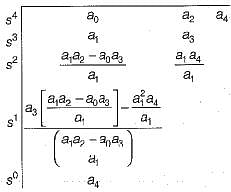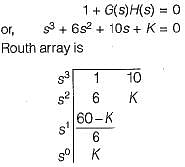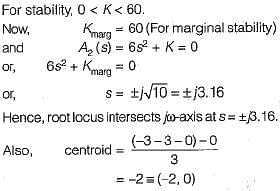Test: ESE Electrical - 4 - Electrical Engineering (EE) MCQ
30 Questions MCQ Test - Test: ESE Electrical - 4
For the circuit shown below, the current through the 1 Ω resistor is
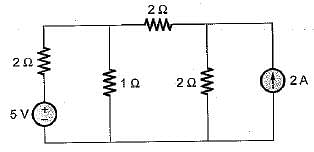

| 1 Crore+ students have signed up on EduRev. Have you? Download the App |
The value of dependent source for the circuit shown below is
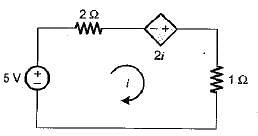

The circuit shown in fig is in steady state with switch open. At t = 0 the switch is closed. Theoutput voltage vt (c) for t > 0 is
The switch of the circuit shown in fig. is opened at t = 0 after long time. The v(t) , for t > 0 is
In the circuit of fig.the switch is opened at t = 0 after long time. The current iL(t) for t > 0 is
The y-parameters of a 2-port network are
A resistor of 1 ohm is connected across as shown in fig. The new y –parameter would be
A three-phase balanced delta connected load of (4 + j8) Ω is connected across a 400V, 3 – Ø balanced supply. Determine the phase current IR. Assume the phase sequence to be RYB.
The three impedances Z1 = 20∠30⁰Ω, Z2 = 40∠60⁰Ω, Z3 = 10∠-90⁰Ω are delta-connected to a 400V, 3 – Ø system. Find the line current I3.
Find the force of interaction between 60 stat coulomb and 37.5 stat coulomb spaced 7.5cm apart in transformer oil(εr=2.2) in 10-4 N,
Find the force between two charges when they are brought in contact and separated by 4cm apart, charges are 2nC and -1nC, in μN.
What is the width of the main lobe of the frequency response of a rectangular window of length M-1?
Which of the following windows has a time domain sequence
f a signal f(t) has energy ‘E’ the energy of the signal f(2t) is equal to:
A function f(t) is an even function, if for all values of (t)
(T is the time-period of the function)
The transfer function of a system is given as
The h[n] is
The transfer function of a system is given as
Consider the two statements
Statement(i) : System is causal and stable.
Statement(ii) : Inverse system is causal and stable.
The correct option is:
Determine the bilateral laplace transform and choose correct option
Determine the bilateral laplace transform and choose correct option.
x(t) = u(-t + 3)
Determine the Fourier series coefficient for given periodic signal x(t) is

Consider the three continuous time signals with fundamental period of T = 1/2
x(t) = cos4πt
y(t) = sin 4πt
z(t) = x(t)·y(t)
The Fourier co-efficient of z(t) are given by
In the question, the FS coefficient of time-domain signal have been given. Determine the corresponding time domain signal and choose correct option.
Consider the signal x(t) = cos(6πt) + sin(8πt), where t is in seconds. The Nyquist sampling rate (in samples/second) for the signal y(t) = x(2t + 5) is
The poles of the transfer function C(s)/R(s) of the system represented by the block diagram shown below are located at

The characteristic equation of a servo system is given by
a0s4 + a1s3 + a2s2 + a3s + a4 = 0
Now, consider the following conditions required to be satisfied by the coefficient of the above characteristic equation for the system to be stable:
1. a1 > 0 and a4 > 0
2. a1 < 0 and a4 > 0
3. a1a2< a0a3
4. a1a2 > a0a3
5. 
6. 
Which of the above conditions holds true for the given system to be stable?
The open-loop transfer function of a closed loop control system is given as:

Which of the following statements is correct about the root locus of the above system?
For a control system having gain margin of -10 dB, the magnitude of GH(s) for 180° phase shift is


